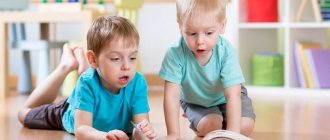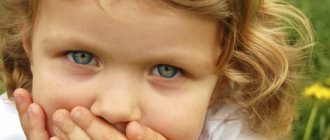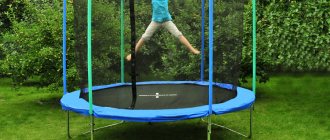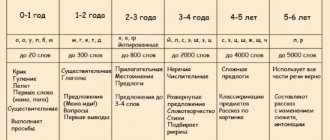Article:
Even harmless speech disorders in children, such as slight burr, can interfere with quality communication, learning and give rise to complexes.
Of course, you can simply “reset” the decision on the speech therapist, but without doing homework, even the most productive meetings in the office will not bring results. Parents will have to participate in any case. We will tell you in our material how to conduct not only useful, but also interesting speech therapy sessions with your child at home.
Causes of speech disorders in children
- Heredity – mental retardation, hearing impairment in parents.
- Intrauterine pathologies (the mother suffered a viral disease during pregnancy and was injured). They develop when the fetus is between 1 and 4 months old.
- Premature birth and birth injuries leading to intracranial hemorrhage.
- Diseases and injuries in the first years of life: rickets, whooping cough, meningitis, damage to the skull or palate, inflammation of the middle ear.
- Psychological reasons: parents do not communicate with the child, treat him poorly, leave him alone too often.
Speech characteristics of children 4-5 years old
At this age, children begin to actively expand their vocabulary. So, by the age of 5, on average, a child already has about three thousand words in stock. In addition, five-year students begin to create more complex sentence structures. If previously they consisted of a maximum of 3-4 words, then at this age one sentence can consist of up to 10 words.
Speech therapy classes for children 4-5 years old are very important
Sentences produced by a child aged 4-5 years are not always logically constructed correctly. If a child is telling a long story or retelling a fairy tale, he does not need to be corrected if the main idea or logic is lost. For this age this is within the normal range.
Note! Also, at the age of five, children often not only tell what they saw or heard, but also make up stories themselves, without relying on their life experience. This only once again confirms the correctness of development. Ridiculous stories are one of its components.
Basic characteristics of a child’s speech at 4-5 years old
By the age of five, a child already begins to distinguish sounds and is able to determine the presence or absence of a particular sound in a certain word. Normally, during the period of 4-5 years, a child should already have completed the formation of the pronunciation of certain sounds and letters that were previously difficult to achieve. So, for example, at 4 years old all hissing sounds should already be present in speech. And by the age of 5, a child should master such complex sounds as “l” and “r”.
In practice, everything is not always so perfect and more than half of children have some speech deviations. The following speech underdevelopment occurs:
- phonetic;
- phonetic-phonemic;
- general.
Important! Simply put, children do not recognize, discriminate, or have serious difficulty pronouncing sounds.
How do you know when it’s time to work on your child’s speech?
Initially, the child learns to pronounce sounds, then to put them into words, then to construct phrases and express thoughts. You should not expect from a two-year-old child impeccably clean pronunciation and beautiful speech, observing genders and cases. In addition, until the age of three, a child will not be able to concentrate on classes for more than 10 minutes.
The optimal age for starting classes for a healthy child is four to five years. By six he should already be able to pronounce sounds correctly and express his thoughts coherently. It is better to correct the pronunciation before the molars grow in.
Classes are needed if:
- the baby pronounces individual sounds incorrectly;
- the child rearranges syllables in words, constructs phrases incorrectly, confuses cases, gender, and numbers;
- “porridge in the mouth”;
- speech is too fast, slurred;
- the child stutters;
- the baby has suffered a birth injury or infectious disease;
- The child was diagnosed with hearing impairment, mild mental retardation, and developmental delay.
Even if you are not going to take your child to a speech therapist on an ongoing basis, it is worth bringing him for a consultation - you will receive recommendations for home activities. It is also advised to show the child to a speech therapist before school, even if there are no obvious problems.
The problem of speech disorders is not always purely speech therapy - sometimes it makes sense to correct pronunciation only after treatment.
Games for sounds, hearing development and logarithmics
Speech or phonemic awareness is the ability to correctly hear, recognize and discriminate sounds.
Games for hearing development
1. “Ears are rumors”
Goal: consolidate the ability to differentiate sounds, develop auditory attention.
The speech therapist shows wooden and metal spoons and crystal glasses. Children name these objects. The teacher offers to listen to how these objects sound. Having installed the screen, he reproduces the sound of these objects in turn. Children recognize sounds and name the objects that make them.
2. “Who said “Meow?”
Goal: to improve the ability to distinguish the voices of domestic animals by ear.
Material: tape recorder, audio recording with the sounds of pets' voices.
The speech therapist plays an audio recording of the sounds of pets. Children must hear and name which pet has the voice.
The game “Who gives what vote” is played in a similar way. An audio recording with the sounds of forest birds is turned on.
3. “Who is standing at the traffic light?”
Goal: to develop auditory attention, recognize and name types of transport.
Material: tape recorder and audio recording with street noise.
The speech therapist plays an audio recording with street sounds. Children listen to sounds and name vehicles stopped at a traffic light (car, truck, tractor, motorcycle, cart, tram).
4. “Where is it ringing?”
Goal: to develop auditory attention, the ability to navigate in space with eyes closed.
Children stand with their eyes closed. A speech therapist with a bell moves silently around the group and rings. Children, without opening their eyes, point their hand in the direction of the sound source.
5. Finger game “Thunderstorm”
Goal: to coordinate movement with the text, taking into account changes in dynamics and tempo of sound.
The speech therapist reads the words of the game, and the children perform movements according to the text.
Drops are dripping (they knock on the table with two index fingers). It is raining (they knock quietly with four fingers of both hands). It pours like a bucket (they knock loudly with four fingers). It starts to hail (they knock with their finger bones, knocking out fractions). Thunder rumbles (drum their fists on the table). Lightning flashes (we draw lightning in the air with our fingers, make the sound sh). Everyone quickly runs home (clap their hands, hide their hands behind their backs). In the morning the sun is shining brightly (describe a large circle with both hands).
Speech imitation or onomatopoeia
- this is the reproduction, following the speaker, of the sounds, words, and phrases he has spoken.
Games for imitating the voices of animals and birds
To play, use animal figures or pictures. Mothers and their babies. After all, the mother frog screams KVA, and the little frog screams KVA. Remember the fairy tale about the three bears, papa bear growls loudly, mama bear is quieter, and the cub squeaks.
Games to imitate household noises:
- The clock is ticking - tick-tock
- Water is dripping - Drip-Drip
- The baby is stomping – TOP—TOP
- The hammer knocks KNOCK-KNOCK
- Scissors cut CHICK-CHICK
- We swing on the swing KACH-KACH
- We eat carrots CRUM-CRUM
- The car goes BI-BI
Speech therapy rhythmics or logorhythmics is a combination of movement, speech and music. The adult reads the verse and shows the movements, the child repeats. Nothing complicated. Children have fun and interesting. Of course, an adult needs to read and learn the necessary poems in advance and learn the movements to them. You also need to select musical accompaniment for the poems in advance. It is advisable to exercise in the afternoon 2-3 times a week.
Game “Walk” (development of general motor skills) Along a narrow path (walking in place) Our legs walk (raising our legs high) Over pebbles, over pebbles (shuffle from foot to foot at a slow pace) And into the hole... bang! (sit on the floor on the last word)
Speech problems in children
Speech disorders in children can be caused by the following reasons.
Phonetic underdevelopment
Perhaps the most common type of violation is the incorrect pronunciation of one or more sounds. Before a speech therapist, you can visit an orthodontist - sometimes the problem can be solved by cutting the frenulum.
Phonetic-phonemic underdevelopment
With such a violation, the baby cannot even hear the sound correctly. Difficulties arise with speech, writing, and learning languages. Ask your child to repeat after you the chains of words: “dom-som-kom-lom” or syllables: “gu-ku-gu-ku.” If he makes a mistake, this is a warning sign.
General underdevelopment
Poor vocabulary, difficulty expressing thoughts, inability to write a description of a picture... As a rule, such children begin to speak later than their peers. They find it difficult to concentrate and remember. In addition to a speech therapist, you will most likely need a neurologist.
Pathologies associated with injuries, heart defects, damage to the nervous system
Examples of such pathologies include alalia, aphasia and dysarthria.
Alalia occurs due to damage to the nervous system. The child speaks very poorly, and his speech is meaningless, or he does not speak at all. Also, sometimes a baby may suffer from movement disorders, hyperactivity, or, conversely, retardation.
If alalia implies that speech initially develops incorrectly or does not develop, then aphasia is an acquired disorder. It can be caused by damage to the cerebral cortex, head injuries, and heart defects. With aphasia, children do not understand other people's speech and do not control their own, do not remember words well, and change sounds and syllables.
Dysarthria is a relatively rare disorder in which a person's speech is slurred and slurred. Dysarthria is provoked by disturbances in speech breathing and articulation, which are associated with lesions of the nervous system.
Such problems need to be dealt with comprehensively - with the help of neurologists, teachers, psychologists and speech therapists.
Fun ABC lesson
This group of games helps children learn a lot of new things from the life of words, expand their vocabulary, and knowledge about language.
Ball game "Say the opposite."
Winter summer. Heat - cold. True False. Rich man - poor man. Bitter - sweet. Useful - harmful...
"The Magic Wand of the Fairy Slovarina"
To play you need a “magic” wand. One end of the stick decreases, and the other increases.
An adult player names a word, then touches one of the children with a stick. The child calls this word either diminutive or increasing, depending on the end of the stick with which the child was touched.
House - house - house. Bridge - bridge - bridge. Rain - rain - rain. Cat - cat - cat...
Author: Krugovykh Margarita Aleksandrovna
Senior teacher of MADOU d/s No. 7 in Ishim
Everyone knows what an important function breathing performs in the life of the human body. In addition to its main physiological function - gas exchange - breathing also provides such a function as speech breathing. Speech breathing (diaphragmatic) is the basis of sounding speech, the source of the formation of sounds and voices.
The mechanism of this type of breathing is inherent in us from the very beginning. This is the oldest type of breathing, inherent in all warm-blooded animals and 90% of the total need for breathing is carried out due to it.
The main muscle that powers this type of breathing is the diaphragm . It separates the abdominal and thoracic cavities. When you inhale, the diaphragm relaxes and, falling, presses on the abdominal organs, which in turn are pressed against the abdominal wall, causing it to protrude and round. As you exhale, the diaphragm contracts, compresses the lungs, and the abdominal wall retracts. In this case, the upper part of the chest remains motionless. Outwardly, it looks like belly breathing.
When correcting speech disorders, there is a need to specially organize and develop speech breathing; breathing exercises become of particular importance. The corresponding gymnastics is aimed at developing in children the skills of correct rational breathing and voluntary control of the process of air flow movement.
How to create an activity at home?
The main principles of homework:
- Regularity. Exercise every day, but without overloading the baby and taking into account his age and well-being. You can start with 3-5 minutes a day, gradually increasing to 15-25.
- Game form. Only you know what your child will like most: retelling an interesting story or a competition to see who can pronounce a tongue twister the fastest. Start with tasks that are more interesting to your baby, gradually moving on to less exciting ones.
- Comfortable environment. For many types of activities you need, at a minimum, a table, a comfortable chair, and often a mirror on a stand.
- Patience. It is impossible to achieve amazing results in one mini-lesson. Encourage your child, praise him for successes and don’t get angry for mistakes, don’t laugh or imitate. Otherwise, the baby will withdraw into himself, and speech problems may worsen.
- Do not do tasks for your child if he cannot cope with them. The point of the classes is to benefit the baby, and not to impress the speech therapist.
Finger games
Finger games are one of the types of development of fine motor skills. There is a close relationship between the human hand and the speech center of the brain.
Learning texts using “finger” gymnastics stimulates the development of speech, spatial thinking, attention, imagination, and develops reaction speed and emotional expressiveness. The child remembers poetic texts better; his speech becomes more expressive.
You need to exercise every day for 5 minutes, then such exercises will be effective.
Types of activities for speech development
Articulation gymnastics
This is a set of exercises that develop the speech apparatus and promote the production of sounds. Articulation gymnastics helps to pronounce words clearly and clearly even without the help of a speech therapist. Suitable for overcoming any speech defects.
You need to exercise twice a day every day. Each lesson is 3-5 minutes, each exercise is five times. You can add no more than one new exercise per day. All classes must be conducted sitting in front of a table mirror. It’s good if the mother or father does them together with the child.
Development of fine motor skills
The speech center of the brain is located close to the motor center. Scientists have proven that if you develop the fine motor skills of a child’s hands, that is, teach him to perform small, precise movements with his hands and fingers, the speech center will also become active. Such exercises are useful for any speech disorders.
Exercises:
- Games with plasticine. For younger children, it is enough to knead it and sculpt figures of one color; for older children, assign multi-colored figures that are more complex.
- Sorting small items (especially important in the third year of life). Mix two types of beads or buttons, peas and beans, shells and pebbles in one container and ask your child to separate one from the other. You can “tailor” some story to this - for example, one doll likes peas for dinner, and the other likes beans. Gradually complicate the task - let there be objects of three, four or more types in one container. The baby should perform the exercise with two or three fingers and bend the rest.
- Exercise with bulk substances. Teach your child to pour cereals, peas, and lentils from one dish to another (glass, bottle) using a spoon or funnel. Dip small toys and beads into the sand and ask your baby to find them and pull them out with his fingers.
- Rolling balls. The child rolls small balls on a flat surface with his palm or finger and does not allow them to slip out.
- Playing with paper. The child crumples, tears and kneads a piece of paper, learning to put it in the trash can.
- Exercise with raisins. Roll out the dough and invite your child to decorate it with raisins. Let him take each one with two fingers and place it at a distance from each other.
Finger games
One of the types of exercises is “finger games”. This is a short dramatization (often rhythmic, poetic) of stories, fairy tales using fingers. The child repeats the movements of adults.
Examples:
- I knock with a hammer (my fists knock against each other), I want to build a house (the fingertips of both hands are connected, depicting the roof of the house). I am building a tall house (palms, touching each other, rise up), I will live in that house (clap our hands).
- We wrote, we wrote (we depict the process of writing), our fingers were tired. Let's shake our fingers (shaking the hands) and start writing again (a movement similar to that at the beginning of the exercise).
- Four brothers walk towards the eldest (we connect our fingers one by one to make a pinch). Hello big! Hello, Vaska-pointer! (connect the thumb with the index finger). Hello, Little Bear! (large - with medium). Hello, Grishka the orphan! (large - with nameless). Hello, little Timoshka! (big - with little finger).
- The fingers played hide and seek and the heads were removed. Like this, like this, and the heads were removed. (All ten fingers rhythmically bend and straighten at the same time.)
- Our fingers woke up, stretched, stretched and shook. They ran, ran, ran, ran, galloped, galloped - and got tired. (We depict all the movements one by one, then shake our fingers and put our hands on our knees.)
- This finger is grandpa, this finger is grandma, this finger is daddy, this one is mommy, this one is me, this is my family! (At first, the hand is clenched into a fist, then we extend it one finger at a time, and at the end there is an open palm.)
It is advisable to perform the exercises slowly, 3 to 5 times: with one hand, then with the other hand, then with both. After each “session,” relax your fingers and hands by shaking them.
There are no strict rules on the frequency of exercise. The main thing is regularity.
Development of auditory perception, phonemic hearing
Without developed auditory perception, correct oral speech is impossible. Show children pictures of animals and ask them to reproduce the sounds they make. While walking, pay children's attention to the sounds of the street and their differences. Play audio recordings with nature sounds and ask your child what sounds and where. Introduce him to audio fairy tales.
Keep jars of pebbles, cones, vessels with water, pipes and whistles at home. Let the child make the sound from them himself.
By the first grade, a child should already have developed phonemic awareness - the ability to hear and distinguish speech sounds. He must be able to determine whether a word contains a particular sound and select words using it.
Exercises:
- "First Sound" Invite your child to name the first sound in the names of the heroes of their favorite fairy tale.
- "Cotton". Pronounce different sounds one by one - let the child clap his hands when he hears the one you asked.
- "Find similarities." Say several words with the same distinct sound and ask your child what they have in common.
- "Guess the object." Make a sound - let the child name the vegetable/fruit/toy that begins with it.
- "Lost Sound" Say the sentence so that the first sound is “lost” in one of the words, and let the child “find” it.
- "True False". Show your baby a thing, name it and repeat the word, first pronouncing one of the sounds correctly and then incorrectly. Let the child indicate which option is correct.
Vocabulary expansion
A rich vocabulary promotes effective communication and successful study, and also signals to others that this is an erudite person with a developed intellect. Vocabulary can be developed without the help of a speech therapist and at any frequency.
Active replenishment begins at approximately 2-3 years. If for a three-year-old it is enough to know about 1,200 words, then for a six- to seven-year-old child, experts estimate the norm at 3.5 thousand. It is important that the baby not only hears a word briefly, but also understands its meaning, remembers it and uses it several times. Then it will be fixed in the active dictionary.
How to help the process:
- Read to your child and with him, and most importantly, let him regularly see how enthusiastically you read books. Be sure to discuss the books you read together.
- Involve the child in the conversation, when talking with him and in front of him, speak correctly, use synonyms and antonyms.
- Play with your child. For example, in the game “Don’t take black and white, don’t say yes and no.” It begins with the question: “Are you going to the ball?” Next, the presenter builds the dialogue in such a way as to force the player to say the words “yes”, “no”, “black” or “white”, and he must answer, avoiding them. If he says it by accident, he loses.
Exercises:
- ask your child to come up with or find synonyms or antonyms for given words in the text;
- “What is a tomato? This is a vegetable. What vegetables do you know?”;
- “What is the sun doing? What morning?”;
- let the child learn to select related words (“table”, “table”, “dining room”, “tabletop”);
- ask for a detailed description of an object or creature;
- suggest matching the name of the animal with the name of its baby.
Breathing game exercises for training speech breathing
Correct speech breathing ensures proper sound production, normal timbre, clarity, volume, and expressiveness. The baby should learn to use air sparingly and control the time of exhalation.
Examples of exercises (each performed 4-5 times):
- "Blowing out the candle." Use a strip of paper as a candle, which is held 10 cm from the child’s lips. He is asked to slowly and smoothly blow on the “candle” so that the “flame” flickers. You need to blow for no longer than 10 seconds, after which there is a 5-second break.
- "Inflating a tire." The child spreads his arms in front of him, says “sh-sh-sh” as he exhales, slowly crosses his arms so that the right one is on the left shoulder and vice versa. Then takes the starting position. Then they clench their hands into fists, taking the “pump handle.” Smoothly bend forward with an exhalation on the sound “ssss.” Straightening, involuntary inhalation.
- "Airplane". Let the baby spread his arms out to the sides, palms up. Raising your head - inhale. Turn to one side with the pronunciation “zhzh”, exhale, stand straight, lower your arms, pause. The same thing - with a turn in the other direction.
- "Hedgehog". Hands on the belt, elbows bent. As you exhale, “puff-puff-puff” and move your elbows forward. Starting position, involuntary inhalation.
- "Crow". Hands rise up through the sides. The child slowly lowers his arms and squats, pronouncing “ka-a-ar” in a drawn-out manner. Starting position, involuntary inhalation.
- "Geese." Hands on the belt, slowly bend the torso forward, while keeping the head down. We pronounce it drawlingly “ga-a-a.” Starting position, inhale.
Performing exercises in which you need to inhale smoothly through your mouth, without lifting your nose, shoulders and chest, and without puffing out your cheeks.
Music games
Helps develop speech hearing and improve voice control.
Will help:
- onomatopoeic songs (“Geese-geese, ha-ha-ha”, “Kwa-kwa, says the frog”);
- games with duplicating sounds with words (the drum “does” knock-knock, boom-boom, bell - ding-ding);
- dances with short words denoting movements (top-top, jump-jump, skok-skok);
- singing sounds with mom or dad (“doo-doo-doo-dudochka”);
- performance of any song to the rhythm of clapping and stamping;
- Guessing a song by rhythm.
Complex of articulatory gymnastics for cheeks and lips
To develop speech, you need not only to train your language. To increase letter coverage, it is important to pay extra attention to the lips and cheeks. Basic articulation gymnastics exercises:
- The baby bites, pats and rubs his cheeks as if they had just been beaten by frost.
- "Fed hamster." The child puffs out his cheeks and then releases the air from them. When performing this exercise does not cause any particular problems, it is worth complicating it. Ask your baby to puff out his cheeks one at a time.
- "Shrimp". Invite your baby to forcefully suck in his cheeks. Don't forget to show an example.
- "Blown Ball." The baby puffs out his cheeks, and then lightly pats them with his palms to release the air noisily.
To develop the articulatory apparatus, parents need to constantly work with their child. The above exercises can occupy your baby’s attention when you are standing in line to see a therapist, riding on public transport, or going home from preschool. While walking, ask your child to repeat the sounds he hears: a song on a bell, the sound of a passing motorcycle, a dog barking, and so on. If short-term speech therapy exercises are performed regularly, your treasure will quickly learn coherent and meaningful speech. Show all exercises by your own example and do not scold your child at the moment of failure, so as not to discourage them from following your instructions. If you start studying with a two-year-old child, then by the age of 4 he will be able to clearly and clearly recite all the poems at matinees.
The ability to speak is a magnificent skill bestowed upon man. In order for your child to pronounce words clearly, you need to make an effort and spare no time in developing competent speech. The support and attention of parents is something without which harmonious personal development is simply impossible. Patient mentoring and regular repetition of exercises to train the tongue and the entire articulatory apparatus will allow the baby to please his parents with his successes.
From an early age, a child, with the help of an adult, can complete speech training tasks. At the same time, it is very important to observe the “golden mean”: take the exercises seriously, but, at the same time, do not demand the impossible from the baby.
When the child manages to cope with oral speech, it is time to move on to written language. For example, find out how to learn to write without errors.
Pronunciation of complex sounds
Articulation develops gradually; children usually master the pronunciation of complex sounds last. Often in speech the child replaces them with simpler ones or does not pronounce them at all.
Sound "R"
Experts advise studying this difficult sound in a child at the age of 5. If the baby pronounces “r”, but incorrectly, then even earlier - then it’s more difficult to relearn.
To help:
- Tongue twisters with “r” (“Karl stole corals from Clara, and Clara stole Karl’s clarinet.”
- Imitation (just say “r” in your speech in front of the child as clearly and cleanly as possible).
- Production from other sounds that the child pronounces correctly. For example, when a child pronounces “zh”, carefully move the tongue deeper into the mouth with a stick - a “r” is formed. Strengthen the sound by repeating the exercise several times. Or the baby says “z”, lightly touching the alveoli with his tongue, and blows heavily on the tongue. The sound "r" is heard.
- Three-stage exercise: the tongue is “sucked” to the hard palate, the child takes a deep breath through the nose and a short exhale through the mouth, connecting the voice.
- Setting up mechanically (carried out only by a speech therapist - with a hammer, spatula).
Sound "Sh"
The production of this sound occurs at 3–5 years of age.
The most commonly used way is through “s”. The child raises his tongue to the sky, pronounces “s” and smoothly exhales air to make “sh”. Before directly placing the “w,” experts recommend developing articulation of the lips and tongue with the help of exercises:
- A wide smile, exposing both rows of teeth, for 5-7 seconds.
- Licking lips with a “wide tongue” from top to bottom.
- Curling the wide tip of the tongue towards the nose.
- The child stretches out his lips with a straw and blows on a cotton ball for a long time, pushing it, for example, into the corner of the table.
- The baby blows through his closed lips onto a strip of paper - stronger, weaker, stronger again.
Sound "L"
Often children do not pronounce this sound at all or pronounce it incorrectly - for example, as “y”. Articulation exercises will also be required here. Ask to draw:
- sound a steamship whistle (“y-y-y”), and then stick out your tongue as far as possible, pinching its middle part between your teeth;
- “talking” of a turkey (“bl-bl-bl”: tongue on the upper lip, the tip of the tongue bends up and down, humming as you exhale in parallel with the acceleration of movements);
- riding a horse (clapping helps strengthen the muscles of the tongue and shows how to lift it up);
- rolling the nut (the tongue from the inside rests on one cheek, then on the other).
Reinforce what you have learned by practicing syllables with complex sounds and tongue twisters.
The “correct” sounds are fixed within 1-2 months. It is better to exercise at home for 15 minutes every day, with a speech therapist - 2 times a week.
Development of a child's grammatical abilities
These games help develop children's grammatical abilities without cramming the letters of the alphabet, without the dull reading of syllables from a book.
"Let's remember the letters." Goal: to help the child remember the letters of the alphabet, relying on auditory, visual, and muscle memory.
* An adult traces the letter along the outline, naming it, and the child shades the letter with a pencil or paints it over.
* The adult draws the outlines of the intended letter in the air, the child tries to guess and name it. In a similar way, an adult draws a letter on the child’s back.
* The letter is molded from plasticine, constructed from matches, counting sticks, and seeds.
* An adult and a child take turns naming the similarity of a letter with objects from the surrounding world.
"Hide and seek with letters." Goal: to train intelligence, imagination, and the ability to recognize familiar letters in graphic contours.
A simple pattern is drawn on a sheet of paper, on sand, on asphalt. You need to look closely at it, see the outlines of letters in its lines and show them in the pattern along the contour one by one.









